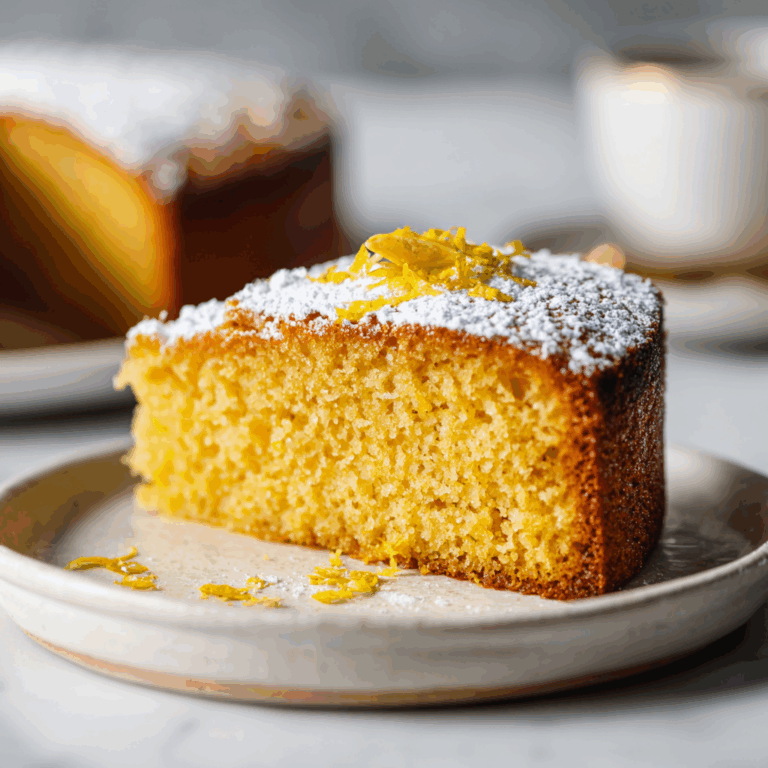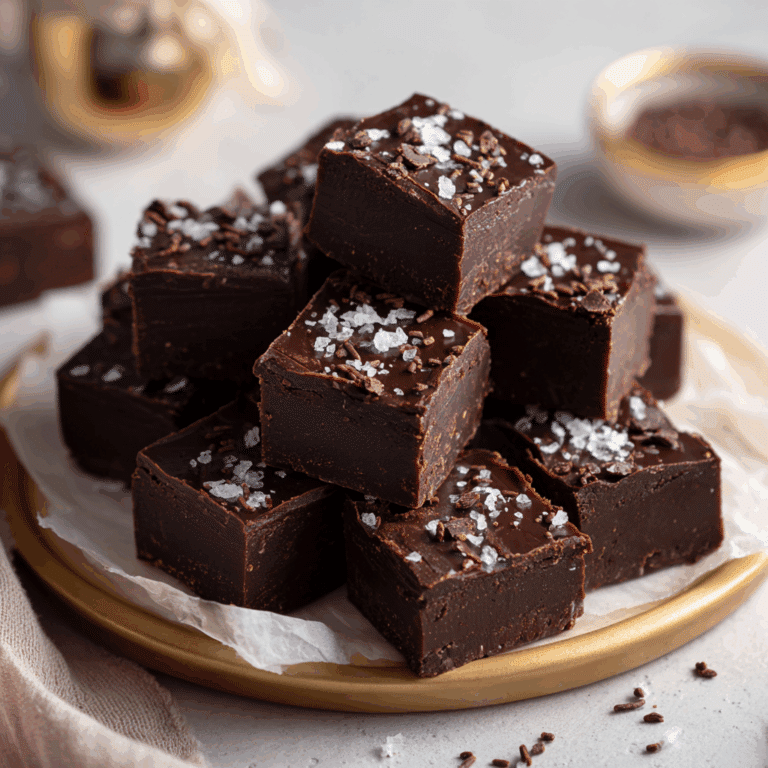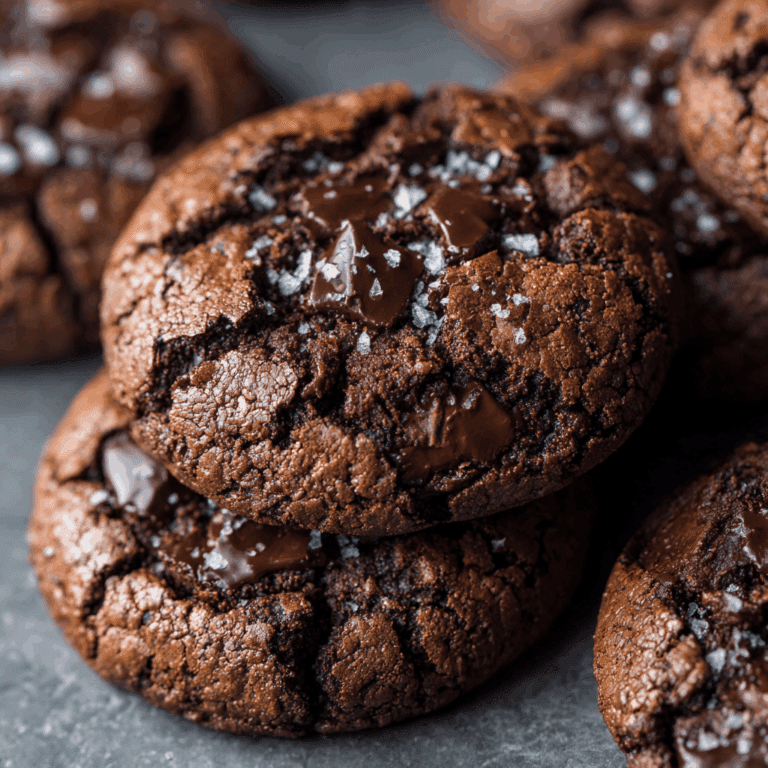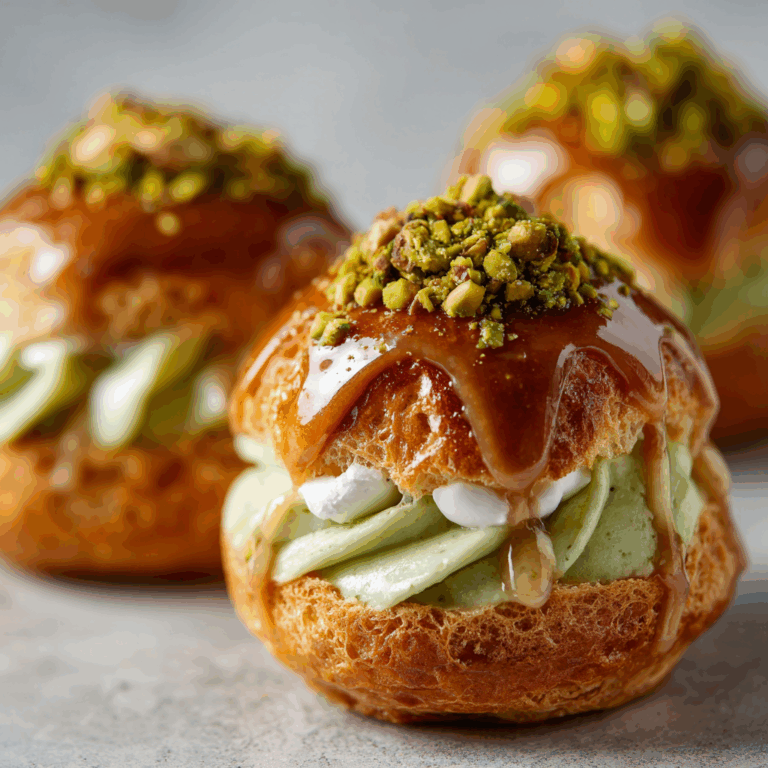Baklava Cheesecake Recipe
If you love desserts that tell a story with every bite, then the Baklava Cheesecake is about to become your new obsession. This stunning creation beautifully marries the creamy tang of classic cheesecake with the flaky, honey-soaked layers and nutty warmth of traditional baklava. Imagine that perfect balance of textures and flavors—the crisp phyllo pastry crackling under your fork, the sweet fragrance of orange blossom water mingling with honey, and the rich pistachio crunch—all blended into one irresistible Mediterranean fusion dessert. Trust me, once you try this Baklava Cheesecake, it will be a centerpiece you’ll rave about at every dinner party.
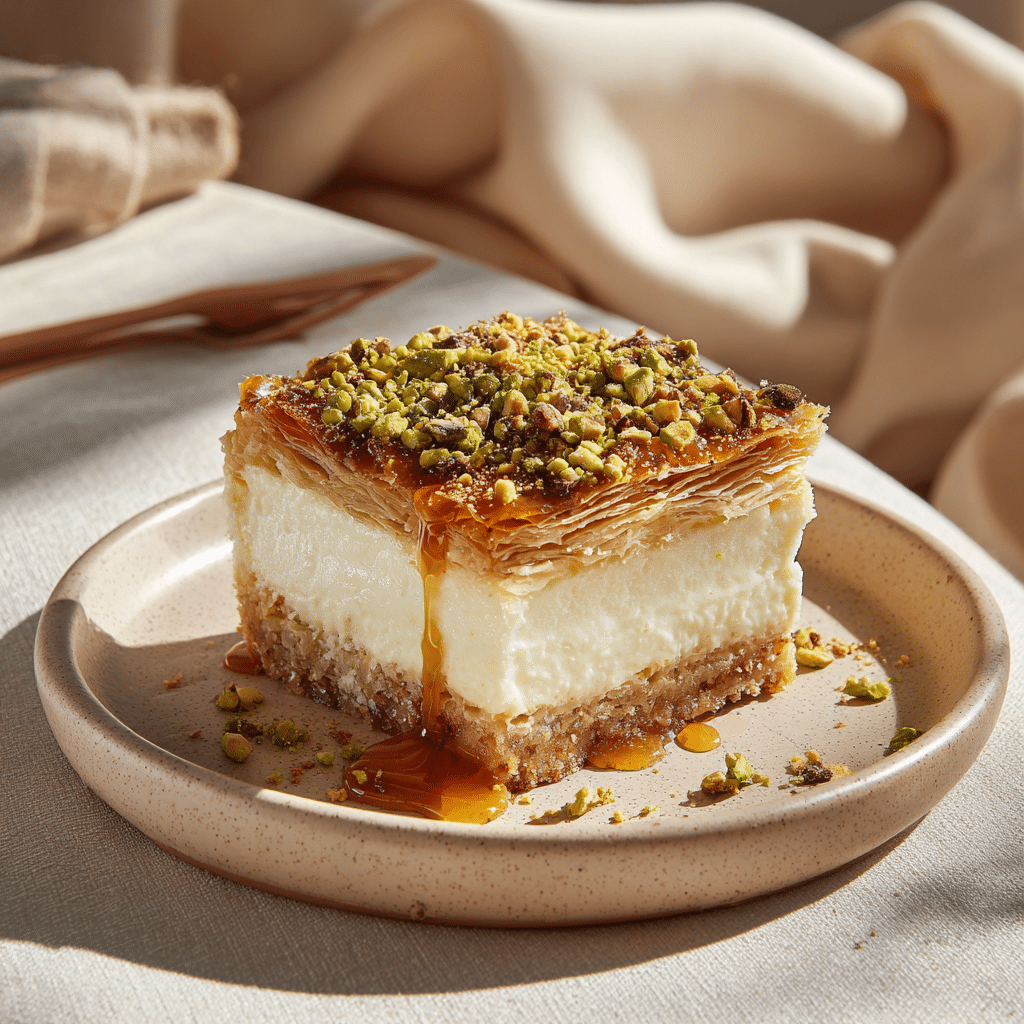
Ingredients You’ll Need
Gathering simple but high-impact ingredients sets the stage for a Baklava Cheesecake that dazzles. Each component plays a vital role: from the buttery flakiness of phyllo to the smooth tanginess of cream cheese and Greek yogurt, and not to forget the aromatic touch of orange blossom water that awakens the senses. Here’s what you’ll want to have on hand:
- 12 sheets phyllo pastry: This paper-thin pastry is the base that creates the signature crispy layers of your dessert.
- ½ cup melted butter: Essential to brush and infuse the phyllo sheets for a golden, rich crust.
- ½ cup chopped pistachios: These add a vibrant green hue and a delightful nutty crunch to contrast the creamy filling.
- ¼ cup honey: The sweet adhesive that brings warmth and moisture to every bite.
- 16 oz cream cheese: The star of the cheesecake layer—smooth and tangy.
- ½ cup Greek yogurt: Adds creaminess with a slight tartness, balancing the sweetness.
- ½ cup sugar: For that perfect level of sweetness without overpowering other flavors.
- 2 eggs: They bind the filling, giving it structure while keeping it luscious.
- 1 tsp orange blossom water: A fragrant floral note that elevates the dessert’s sophistication.
How to Make Baklava Cheesecake
Step 1: Prepare Your Oven and Phyllo Base
Start by preheating your oven to 170°C, ensuring it’s at the perfect temperature for even baking. Next, carefully brush each of six phyllo sheets with melted butter, layering them inside a springform pan. Take your time here—each buttery layer contributes to the signature crispiness. Once layered, sprinkle half of the chopped pistachios evenly over the phyllo, then drizzle with half the honey, which will soak into the pastry and nuts, creating that luscious, sticky texture Baklava Cheesecake is famous for.
Step 2: Blend and Pour the Cheesecake Filling
In a mixing bowl, combine the cream cheese, Greek yogurt, sugar, eggs, and orange blossom water. Blend until completely smooth—no lumps allowed! This silky filling will provide the cooling and creamy counterpoint to the crunchy layers. Pour it gently over the prepared phyllo and nut base, smoothing it out evenly to reach the edges of your pan.
Step 3: Add the Top Phyllo Layers and More Nuts
Repeat the layering process by brushing and stacking the remaining six phyllo sheets over the cheesecake filling. Again, add the remaining chopped pistachios, and finish with a drizzle of honey on top to ensure that irresistible golden glaze once baked. These layers will crisp up and hold the filling beautifully during baking.
Step 4: Bake and Chill
Place your springform pan into the oven and bake for 55 to 60 minutes or until the top is gorgeously golden and set. When it’s ready, let the Baklava Cheesecake cool to room temperature before transferring it to the fridge to chill for at least five hours. This chilling step is critical to achieving the perfect slice—firm, yet luscious.
How to Serve Baklava Cheesecake
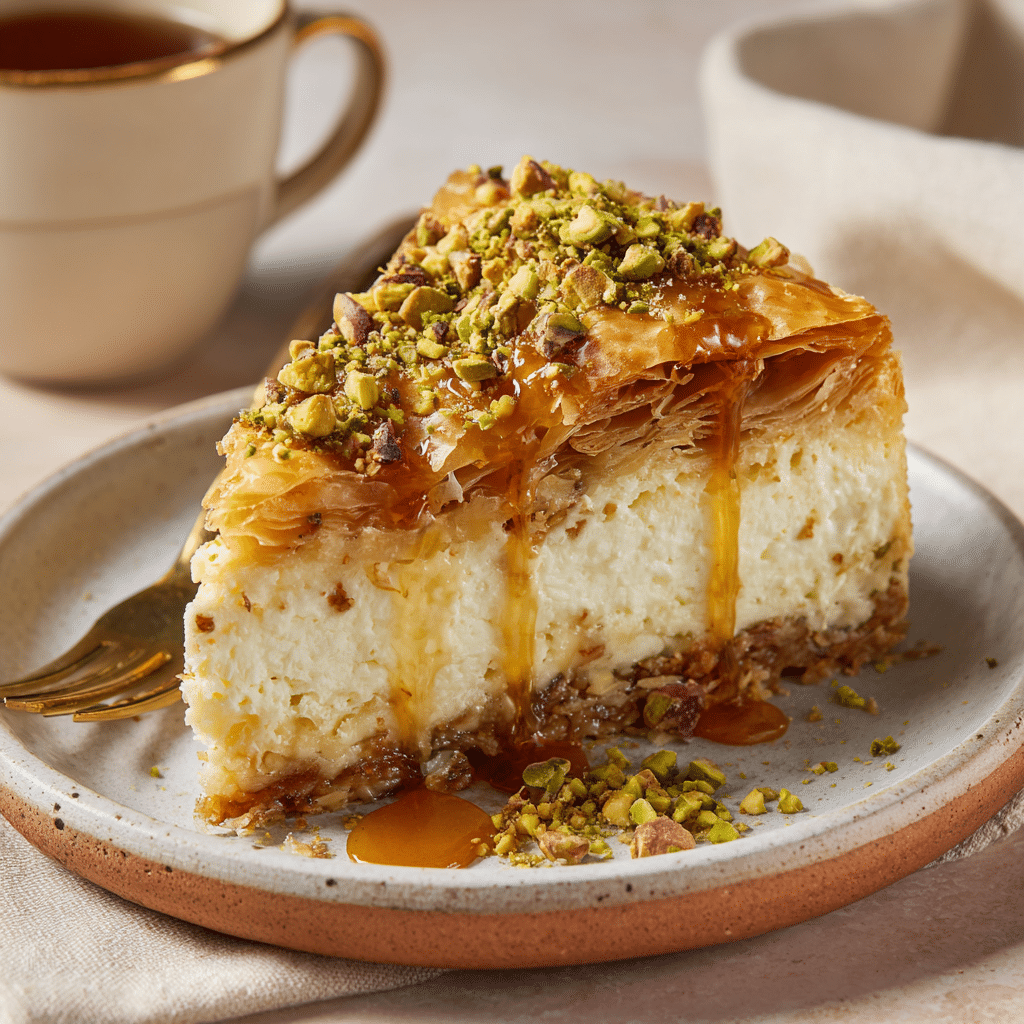
Garnishes
For presentation, sprinkle some extra finely chopped pistachios on top for a pop of color and crunch right before serving. A light drizzle of honey or even a dusting of cinnamon can also enhance the visuals and add a touch of aromatic warmth. Adding fresh mint leaves alongside each slice offers a refreshing contrast that complements the dessert’s richness beautifully.
Side Dishes
Pair your Baklava Cheesecake with a scoop of vanilla bean ice cream or a dollop of lightly sweetened whipped cream. Fresh fruits such as figs, pomegranate seeds, or orange segments add brightness and a juicy burst that contrasts nicely with the dense cheesecake. A small cup of strong, black coffee or cardamom-spiced tea also pairs seamlessly, enhancing the Mediterranean vibe.
Creative Ways to Present
Elevate the experience by serving the Baklava Cheesecake in individual glass jars layered with a bit of honey and chopped pistachios for a rustic yet elegant look. Alternatively, cut the cheesecake into neat squares and serve alongside mini baklava pieces for a fun tasting platter that celebrates both elements. You can even create a trifle-style dessert by layering chunked cheesecake with whipped cream and crushed pistachios in fancy stemware.
Make Ahead and Storage
Storing Leftovers
Baklava Cheesecake keeps wonderfully in the fridge, covered tightly with plastic wrap or stored in an airtight container. It stays fresh for up to 4 days, giving you plenty of opportunities to savor leftovers without worry.
Freezing
If you want to prepare this dessert in advance or keep extra portions, you can freeze the Baklava Cheesecake. Wrap it securely in plastic and aluminum foil to prevent freezer burn, and it will maintain its flavor and texture for up to 2 months. Thaw overnight in the refrigerator before serving.
Reheating
When ready to enjoy again, let the cheesecake come to room temperature for about 30 minutes for optimal texture. If you prefer a slightly warm slice, pop it in a low oven (around 150°C) for 5–7 minutes, but be careful not to heat too long and melt the beautiful layers.
FAQs
Can I use other nuts besides pistachios?
Absolutely! While pistachios offer that classic baklava color and flavor, walnuts, almonds, or a mix can work beautifully. Just chop them finely for the best texture.
Is it possible to make the recipe vegan?
Substituting cream cheese and yogurt for plant-based alternatives can work, but you’ll need to ensure those substitutes have a creamy consistency and good tang to mimic the original. Also, use a vegan butter for brushing phyllo.
What makes orange blossom water important in this recipe?
Orange blossom water adds a delicate floral aroma that’s signature to many Mediterranean desserts. It lifts the flavor profile, adding sophistication and balancing the richness of cream cheese and honey.
Can I prepare the Baklava Cheesecake without a springform pan?
A springform pan is ideal for easy removal, but if you don’t have one, use a regular round baking dish lined with parchment paper extending above the edges to lift the cheesecake out once chilled.
How can I prevent the phyllo from drying out while assembling?
Phyllo dries out quickly, so keep the sheets covered with a slightly damp kitchen towel as you work to maintain moisture before baking.
Final Thoughts
I cannot recommend enough that you try the Baklava Cheesecake at your next dessert occasion. It’s a rare gem that beautifully bridges cultural flavors and textures, offering layers of buttery crispness, creamy indulgence, and a hint of fragrant sweetness. Each bite feels like a celebration, and your guests will be amazed at the elegance of something that’s surprisingly simple to prepare. Go ahead, make this showstopper your own – it’s truly unforgettable!


